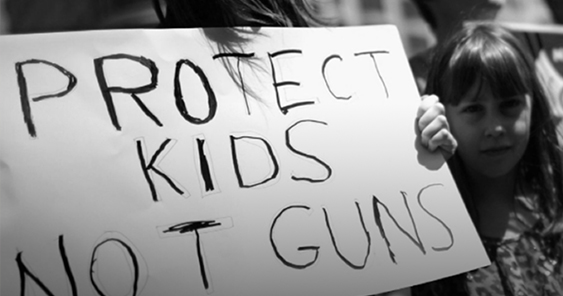Words by Ana Natividad
Photos courtesy of March for Our Lives
Having mobilized an incredible turnout for March For Our Lives last March 24, the student organizers from Marjory Stoneman Douglas show no signs of slowing down. March For Our Lives, which began as a protest, has transformed into a movement of solidarity and, in some ways, catharsis. It’s also a showcase of the fresh new ways that online activism can be used to complement offline action. Use what you have, right? Gen Z did just that: they used their voices, their anger, their grief, their creativity, and their digital media.
The March For Our Lives movement manifested in response to the Valentine’s Day shooting in Parkland Florida, when a former student armed with an assault rifle took the lives of 14 students and three faculty members, and injured more than a dozen others at Marjory Stoneman Douglas High School.
The survivors want better gun legislation. They want to see young people at the polls voting for politicians who will enact actual changes. They are calling for a vital reassessment of how current regulations and interest groups have made it possible for the 19-year old killer to possess the weapon he used to murder fellow students. The students have been vocally critical of the influence of the National Rifle Association (NRA) on policies and politicians’ decision-making, loudly pointing out that it’s high time for change. Their activism is being recognized as a turning point in America’s gun reform conversation.
In a unique convergence of factors, Parkland’s students are proving to be unlike other survivors of mass shootings we’ve seen. Their mission statement begins very concisely: “Not one more”. They seek to be the last ones to experience a school shooting. These teenagers are channeling their traumatic experiences, coupled with the digital and physical resources and support from various groups at their disposal, into pursuing the change they want to make. They have shown an acute awareness of how politics has been conducted and the direction they want to move the conversation — from a comprehensive assault weapons ban to better background checks, to strengthening federal agencies. Whether on Twitter or in broadcasted Town Halls, they’ve called out people and practices they find problematic. In the age of virality, they know how to work the media machine.
In pursuing these objectives, they seem to have also pushed digital activism to new heights. One of its organizers, Jaclyn Corin, told TIME Magazine, “People always say, ‘Get off your phones,’ but social media is our weapon. Without it, the movement wouldn’t have spread this fast.” The hundreds of thousands around the world who attended the 450 marches across America, and more than 800 sister marches internationally are a testament to just how far it did spread. Their call to march in Washington was heard and emulated all over the world.
March For Our Lives markedly features young voices as the headline rather than a byline. It was a deliberate choice to allow only young speakers to address the huge crowd in Washington D.C. on March 24. Naomi Wadler, 11, garnered much praise for her ode to the underrepresented African-American girls and women victims of gun violence. Yolanda Renee King, 9, also took the stage, personifying the historical links of youth civil activism to the era of her iconic grandfather.
The Parkland students are purposefully amplifying other voices, aware that the media spotlight doesn’t shine on less affluent communities that face gun violence with more regularity than they do. It is this inclusive and intersectional media savoir-faire that has been definitive of their success. Digital spaces have been mobilized to enhance the reach, content, and context of the physical march.

Protesters turned on their creative gears to launch campaigns for gun reform.
In the days leading up to the march, students across the United States staged walk-outs in solidarity and protest, accompanied by hashtags such as #NeveragainMSD. On March 19, the organizers visited Twitter in New York for a Live Q&A using #ASKMSDStudents. In the face of the usual claims of clicktivism and slacktivism that have long plagued hashtag-generated solidarity, they are pushing the envelope on what can be done with technology in the service of activism, to generate actual conversations and exchange.
While it did make use of #IWillMarch, #EnoughIsEnough, and #NeverAgain, among others, this campaign cultivated digital activism through connecting its own platform with existing features of social media, and already familiar apps. The digital infrastructure was already there, they simply supplied relevant content that still allowed for individual creativity and preference, while simultaneously getting their uniform messaging across.
The march website’s resources section provides interested parties with a Dropbox folder housing a multitude of information, printable designs, and social media shareables. Among them were price tags students were encouraged to wear to the march.
Partnerships with well-known brands expanded the reach and ease with which one can participate in the movement, on and offline.
Those unable to participate in person could still dissent digitally. A digital coloring book was tailor-made for Instagram stories, by ad agency BBH L.A. in collaboration with students, providing templates for users to screenshot, color and design as they wish, and share or print into protest signs. Similarly, a plethora of free printable posters and slogans further connected the digital resistance with the bodies in the streets.
The Tumblr Takeover exemplifies how social media platforms generated coverage of the march, and access to information about the issue. Anyone who went on Tumblr that day saw a livestream, and gun violence prevention content in their feed, as well as links to resources and a petition to sign.
Another interesting way this march has connected the digital with the physical protest is by partnering with ride sharing app, Lyft. The company allotted $1.5 million dollars to give free rides to students who RSVP’d online, in any of the 50 participating cities. These among many other examples, show the evolving role that digital media, and the creative usage thereof, take in social movements.
Columbine didn’t have our social media and apps. Sandy Hook were too young. Parkland is proving to be just the right mix in showing us just how powerful the voices of young people can be, when coupled with their know-how in navigating the digital landscape that activism must also now occupy.
Based on calculations of the money received by politicians from the National Rifle Association, the life of each student enrolled in Florida theoretically amounts to $1.05.
This article was published in the adobo magazine Gender 2018 issue.









